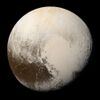Astronomy:(523645) 2010 VK201
| Discovery[1] | |
|---|---|
| Discovered by | Pan-STARRS 1 |
| Discovery site | Haleakala Obs. |
| Discovery date | 1 November 2010 |
| Designations | |
| (523645) 2010 VK201 | |
| 2010 VK201 | |
| Minor planet category | TNO[2][3] · KBO (hot)[4] · distant[1] |
| Orbital characteristics[2] | |
| Epoch 27 April 2019 (JD 2458600.5) | |
| Uncertainty parameter 3 | |
| Observation arc | 7.13 yr (2,606 d) |
| |{{{apsis}}}|helion}} | 48.065 AU |
| |{{{apsis}}}|helion}} | 37.973 AU |
| 43.019 AU | |
| Eccentricity | 0.1173 |
| Orbital period | 282.16 yr (103,060 d) |
| Mean anomaly | 170.71° |
| Mean motion | 0° 0m 12.6s / day |
| Inclination | 28.845° |
| Longitude of ascending node | 156.40° |
| 88.906° | |
| Physical characteristics | |
| Mean diameter | 443 km (est.)[4] 501 km (est.)[5] 505 km (calc.)[6] |
| Rotation period | 7.59±0.05 h[7][8] |
| Geometric albedo | 0.10 (assumed)[6] |
| C (assumed)[6] | |
| Absolute magnitude (H) | 4.40±0.07 (SR)[7] 4.6[6] 5.0[1][2][5] |
(523645) 2010 VK201 (provisional designation 2010 VK201) is a trans-Neptunian object and member of the classical Kuiper belt, approximately 500 kilometers (310 miles) in diameter. It was discovered on 1 November 2010, by the Pan-STARRS 1 survey at Haleakala Observatory, Hawaii, United States.[1] It has a rotation period of 7.6 hours.[6] It was numbered in September 2018 and remains unnamed.
Orbit and classification
Located beyond the orbit of Neptune, 2010 VK201 is a non-resonant classical Kuiper belt object (cubewano) of the so-called hot population, which have higher inclinations than those of the cold population.[4] It orbits the Sun at a distance of 38.0–48.1 AU once every 282 years and 2 months (103,060 days; semi-major axis of 43.02 AU). Its orbit has an eccentricity of 0.12 and an inclination of 29° with respect to the ecliptic.[2] The body's observation arc begins with its official discovery observation at Haleakala in November 2010.[1] 2010 VK201 has been identified as a member of the Haumea family in a dynamical study led by Proudfoot and Ragozzine in 2019.[9]
Numbering and naming
This minor planet was numbered by the Minor Planet Center on 25 September 2018 (M.P.C. 111778).[10] As of 2018, it has not been named.[1]
Physical characteristics
2010 VK201 is an assumed carbonaceous body with a relatively low albedo (see below).[6]
Rotation period
In 2011, a rotational lightcurve of 2010 VK201 was obtained from photometric observations in the S- and R-band by Susan Benecchi and Scott Sheppard taken with Carnegie's 2.5-meter Irénée du Pont telescope at the Las Campanas Observatory in Chile. Lightcurve analysis gave a rotation period of 7.59±0.05 hours with a brightness amplitude of 0.30 magnitude ({{{1}}}).[6][7]
Diameter and albedo
According to Michael Brown and the Collaborative Asteroid Lightcurve Link, 2010 VK201 measures 501 and 505 kilometers in diameter, based on an absolute magnitude of 4.6 and 5.0, assuming an albedo of 0.07 and 0.10 for the body's surface, respectively.[4][5] The Johnston's archive estimates a smaller diameter of 443 kilometers.[6]
References
- ↑ 1.0 1.1 1.2 1.3 1.4 1.5 "523645 (2010 VK201)". Minor Planet Center. https://www.minorplanetcenter.net/db_search/show_object?object_id=523645. Retrieved 9 October 2018.
- ↑ 2.0 2.1 2.2 2.3 "JPL Small-Body Database Browser: 523645 (2010 VK201)". Jet Propulsion Laboratory. https://ssd.jpl.nasa.gov/sbdb.cgi?sstr=2523645. Retrieved 9 October 2018.
- ↑ "List Of Transneptunian Objects". Minor Planet Center. https://minorplanetcenter.net/iau/lists/TNOs.html. Retrieved 9 February 2018.
- ↑ 4.0 4.1 4.2 4.3 "List of Known Trans-Neptunian Objects". Johnston's Archive. 22 July 2017. http://www.johnstonsarchive.net/astro/tnoslist.html. Retrieved 9 October 2018.
- ↑ 5.0 5.1 5.2 Brown, Michael E.. "How many dwarf planets are there in the outer solar system?". California Institute of Technology. http://web.gps.caltech.edu/~mbrown/dps.html. Retrieved 9 October 2018.
- ↑ 6.0 6.1 6.2 6.3 6.4 6.5 6.6 6.7 "LCDB Data for (523645) 2010 VK201". Asteroid Lightcurve Database (LCDB). http://www.minorplanet.info/PHP/generateOneAsteroidInfo.php?AstInfo=0%7C2010+VK201. Retrieved 9 October 2018.
- ↑ 7.0 7.1 7.2 Benecchi, Susan D.; Sheppard, Scott S. (May 2013). "Light Curves of 32 Large Transneptunian Objects". The Astronomical Journal 145 (5): 19. doi:10.1088/0004-6256/145/5/124. Bibcode: 2013AJ....145..124B.
- ↑ "Asteroid (523645) 2010 VK201". Small Bodies Data Ferret. https://sbntools.psi.edu/ferret/SimpleSearch/results.action?targetName=2010+VK201. Retrieved 9 October 2018.
- ↑ Proudfoot, Benjamin; Ragozzine, Darin (May 2019). "Modeling the Formation of the Family of the Dwarf Planet Haumea". The Astronomical Journal 157 (6): 230. doi:10.3847/1538-3881/ab19c4. Bibcode: 2019AJ....157..230P.
- ↑ "MPC/MPO/MPS Archive". Minor Planet Center. https://www.minorplanetcenter.net/iau/ECS/MPCArchive/MPCArchive_TBL.html. Retrieved 9 October 2018.
External links
- MPEC 2011-U10 : 2010 VK201, Minor Planet Electronic Circular – Minor Planet Center
- List of Transneptunian Objects, Minor Planet Center
- "Light curves of 32 large trans-Neptunian objects"
- Discovery Circumstances: Numbered Minor Planets (520001)-(525000) – Minor Planet Center
- (523645) 2010 VK201 at AstDyS-2, Asteroids—Dynamic Site
- (523645) 2010 VK201 at the JPL Small-Body Database
 |



